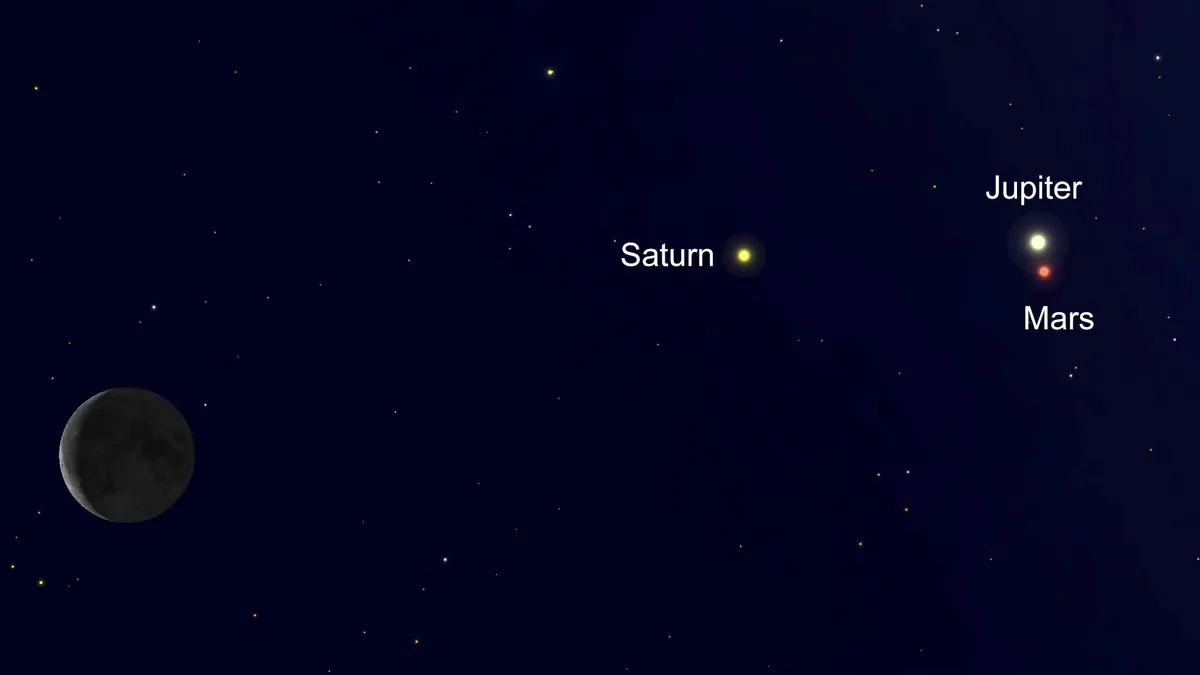Mars and Jupiter Set for Rare Close Encounter in Night Sky
Mars and Jupiter will appear extremely close in the night sky, a phenomenon not seen since 2018. This celestial event coincides with the Perseid meteor shower, offering a spectacular view for stargazers.

In a rare celestial event, Mars and Jupiter are set to appear remarkably close in the night sky on Wednesday, August 14, 2024. This planetary conjunction, where the two planets will seem to be just one-third of a moon's width apart, marks their closest approach in over six years.
Stargazers can witness this spectacle in the eastern sky, near the constellation Taurus, before dawn. While the planets will appear close from Earth's perspective, they will actually be more than 350 million miles (575 million kilometers) apart in their respective orbits.

This event coincides with the annual Perseid meteor shower, which occurs between July 17 and August 24, offering an additional treat for sky watchers. No special equipment is required to view these celestial phenomena, making it accessible to all.
Jon Giorgini of NASA's Jet Propulsion Laboratory explains that while these events are primarily of interest to sky enthusiasts, they also demonstrate the precision of astronomical predictions. The ability to forecast such occurrences years in advance showcases the advancements in our understanding of celestial mechanics.
Planetary conjunctions like this occur approximately every three years. The last time Mars and Jupiter appeared this close was in 2018, and the next similar event is expected in 2033. Historically, the closest approach in the past millennium occurred in 1761, when the two planets appeared as a single bright object to the naked eye.
It's worth noting that Mars, often called the "Red Planet" due to iron oxide on its surface, is the fourth planet from the Sun and hosts the largest known volcano in the Solar System, Olympus Mons. Jupiter, on the other hand, is the largest planet in our system, with a mass exceeding two and a half times that of all other planets combined. It boasts at least 79 known moons and possesses the strongest magnetic field among all planets.
While this celestial dance offers a captivating view, it also serves as a reminder of the vast distances in our solar system and the ongoing marvels of space exploration and astronomical research.
"Such events are mostly items of curiosity and beauty for those watching the sky, wondering what the two bright objects so close together might be. The science is in the ability to accurately predict the events years in advance."


































